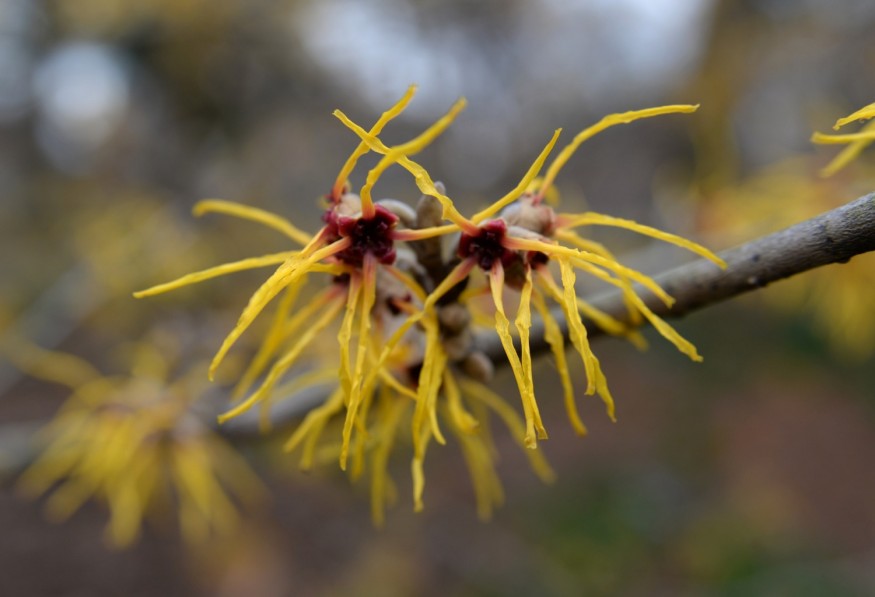
According to researchers, the way witch hazel disperses its seeds-at bullet speed-could have a significant impact on the development of robotics in the future.
Bullet Speed Seed Dispersal
The physics underlying witch hazel plants' capacity to shoot seeds into the air with incredible velocity has recently been explained by a Duke University study.
The scientists found that because of the spring-loaded mechanism in their fruits, members of the witch hazel family can launch larger seeds just as quickly as lighter ones.
Under the direction of senior author Sheila Patek and graduate student Justin Jorge, the study investigated the realm of plant biomechanics using rigorous measurements and high-speed video recordings.
The witch hazel, which is frequently found in forests, is well-known for its fragrant bush and crinkly, ribbon-like petals on its flowers.
Jorge claims that because of the powerful firepower of its fruits, it is more equivalent to a howitzer, or a small gun.
Witch hazels' woody seed capsules burst open when they are ready to release their seeds. As pressure rises, the seeds eventually burst out like rifle bullets, traveling 30 feet per second in just half a millisecond.
This explosive seed dispersion occurs so quickly that it is nearly impossible to photograph. Jorge claims that blinking will prevent the spectator from seeing the dispersal.
View From a 100,000 Frames Per Second
The phenomenon was captured by the research team using a high-speed video camera that can record at 100,000 frames per second.
Three distinct witch hazel species were located in Duke Gardens, otherwise known as the Duke Forest, and the researchers collected their fruits.
The weight of the collected seeds varied; the lightest weighed only 15 milligrams, which is less than a grain of rice, whereas others were ten times more substantial.
What the scientists found
Unexpectedly, the witch hazels could throw the heavier seeds at the same speed as the lesser ones.
Jorge and his crew discovered that the launch velocities were all rather similar. He certainly did not anticipate this, given the order level of discrepancies in seed masses.
Spring Mechanisms in Flowers
The spring-loaded ejection of the fruit capsule was found to be the key to the seed's velocity by the researchers.
The three species that were the subject of the investigation all used the same mechanism to propel their seeds.
The fruit capsule dries up and warps before the seeds are released. The woody fruit capsule's walls ultimately compress, discharging the seed into the air.
The witch hazel uses springs to exert the force needed to propel an object that is heavier at the same speed as a lighter one.
By observing the effort required to wedge the grains back into place, the researchers calculated the elastic potential energy contained in the seed capsule's spring-like structure.
They discovered that witch hazel species with larger, more elastic capsules also had heavier seed types.
Jorge intends to carry out additional research by determining the forces that affect witch hazel seeds as they zip through the air and how far they can go.
In addition to shedding light on the amazing adaptations of the witch hazel, this work advances knowledge of the processes involved in seed dispersal throughout the plant kingdom.
According to the experts, some of the things we can learn from nature will help us create better robot designs.
Jorge noted that initially, it is necessary to comprehend how these biological springs function to see if there are any advantages to using these forms to enhance the design of fabricated springs, for instance, those used in smaller jumping robots.
Related Article : Hydrangea Color Could Be Modified Through Soil Quality, Expert Explains
© 2025 NatureWorldNews.com All rights reserved. Do not reproduce without permission.




